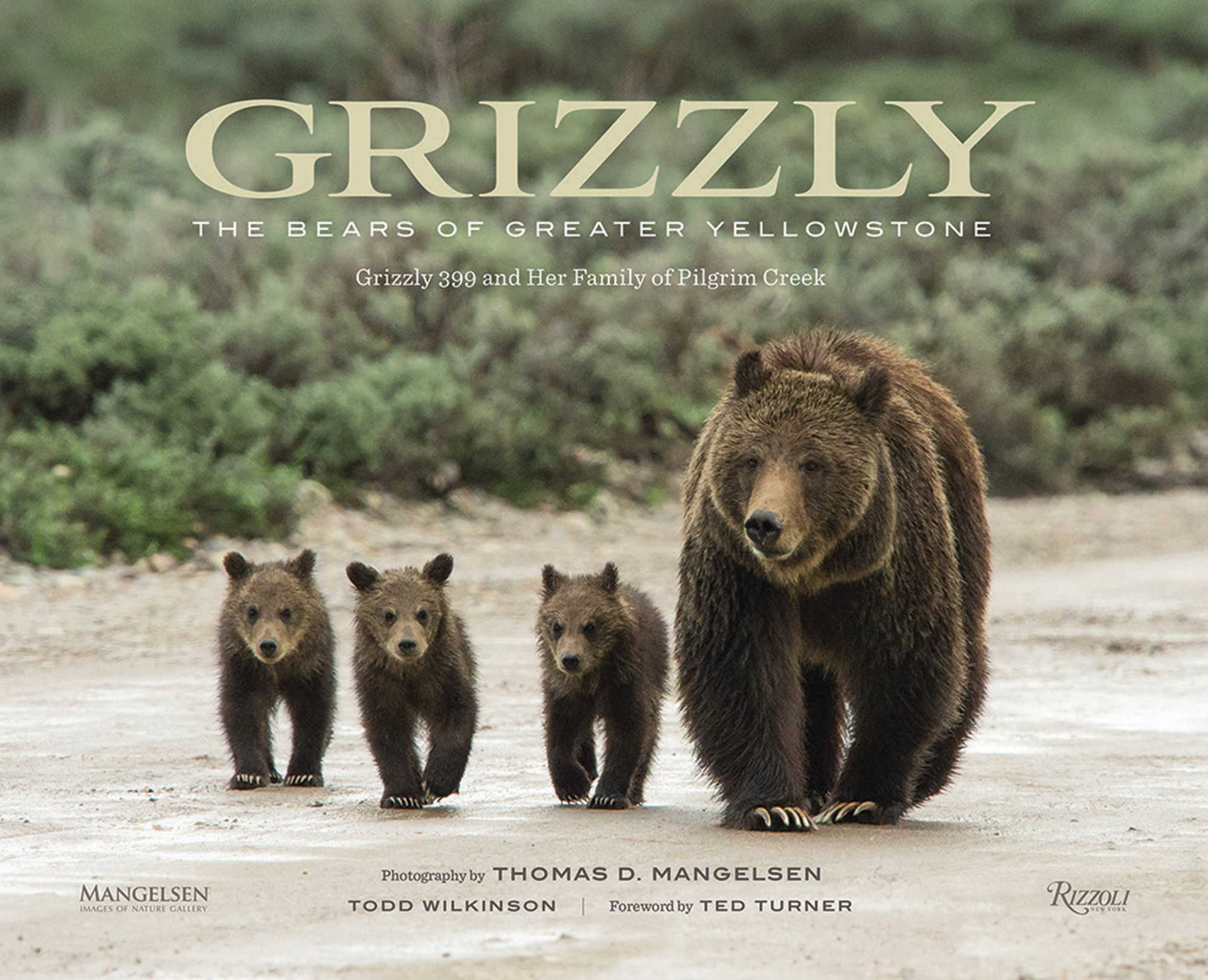
04 Dec Books: Reading the West
Grizzly: The Bears of Greater Yellowstone, (Rizzoli, $60) photographed by Thomas Mangelsen and written by Todd Wilkinson, is a giant, oversized, gorgeous, fascinating, old-fashioned photo book that belongs on bookshelves and coffee tables throughout the West and with bear enthusiasts everywhere. Nearly every turn of the page reveals another intimate look at the world of Yellowstone and Grand Teton national parks and the grizzlies who live there. But this is not just a pretty collection of images. Grizzly reveals the story of a well-known mother bear and her offspring, putting the bears’ story in the context of the history of the region, and examining the challenges of living wild in a world increasingly designed for what we call civilization.
Bear 399, the mother griz who is the focus of this book, found fame in 2006. After she emerged from her winter den with three cubs, the quartet became a fixture along the roadsides around Jackson Lake. The family was so visible — and so very photogenic — that they developed into a tourist sensation and Internet superstars. Mangelsen was there from the start, photographing the 400-pound mother bear and her triplets as they went about their bearish business of hunting, scavenging and grazing to the delight of visitors, the consternation of elk hunters, and the befuddlement of wildlife managers and conservationists. Mangelsen, one of the best-known and most respected natural history photographers around, amassed hundreds of images in all seasons over a decade of bear watching, some of which ended up as famous as the bears themselves. In the pages of this book you see them grow, move away from home (so to speak), and become part of the story of grizzly recovery in the region.
Mangelsen’s images of the bears have the feeling of a family album, a collection put together by a proud parent of his kid’s annual milestones: rolling in tall grass, running through the snow, and weaving between cars in an iconic national park “bear jam.” Journalist Wilkinson adds a layer of context to the images and the narrative they frame. He notes that he’s telling a bear story, not a human story, and asks readers to reflect on the notion that the bears are just being bears; how humans react to them is a separate issue.
Grizzly is a well-matched collaboration, and part of the appeal is Wilkinson’s ability to chronicle Mangelsen’s experience. He also provides a survey of the history and literature of the last two centuries of human-bear interaction in the West. The images and their subjects coalesce with Wilkinson’s lucid and considered prose in a manner that makes this book more than just a pretty coffee table accessory. The thoughtful foreword by Ted Turner, who has earned his place on the list of influential wildlife conservationists of the 20th century, helps complete the package. This beautifully realized book is one that justifies both the price and the table or shelf space.
The textured, tooled-leather look of the dust jacket that adorns The Sons of Charlie Russell: Celebrating Fifty Years of the Cowboy Artists of America by B. Byron Price (University of Oklahoma Press, $95) is at once delightfully kitschy and completely appropriate. The Cowboy Artists of America (CAA) is celebrating its 50th anniversary with the release of this impressive volume, and Western art enthusiasts and collectors will want to spend time with the art in this book and the stories of the artists who created it.
From the opening poem by Don Hedgpeth, titled “For All my CA Pals,” the clear intention of this volume is to showcase the CAA membership and put contemporary Western art into context. Hedgpeth’s words set the stage for the book’s theme, celebrating the camaraderie of the organization it portrays:
You’re the sons of Charlie Russell
and I’m proud to call you friends,
You spread the paint and shape the clay
where western art begins
And your callin’ is a hard one
if you really do it right.
High lonesome like a cowboy
on a starless, stormy night.
The narrative that unfolds in the essays is the creation story of the CAA after the end of World War II. In many ways, it is also the story of American culture in the 1950s and 1960s, when our collective attention re-engaged with the American West. In those decades, Western mythology — and interpretations of its style and fashion — dominated Saturday matinees and TV screens across the country. When Texan Lyndon B. Johnson ascended to the presidency, he brought Western art with him to the White House, following in the footsteps of Theodore Roosevelt, who had collected Western works decades earlier. The men who founded the organization were influenced by the giants who preceded them and by the collectors who sought their works.
The confluence of influences on Western commerce, art and history is what makes this such an interesting book, above and beyond the reproductions of art in its pages. The photographs of the members of the CAA, alone and together, at work and at play, plus ephemeral materials associated with the organization, add context to the images. The essays about the continuum of creation in Western art and artists, placed in the historical timeline of America, are absorbing reading.
The last section of the book is a gallery of CAA members’ work, the final proof that these artists are The Sons of Charlie Russell who can trace their achievements back to the famous early works of Russell and Frederic Remington, while showcasing their innovation and contemporary relevance. The presentation of the art alongside the photographs of its creators offers an interesting perspective on the evolution of the genre over the last 50 years.
Shann Ray’s new novel American Copper (Unbridled Books, $16) explores the lives of a widely disparate bunch of characters who both play on and defy type, in an early 20th century Montana setting that does much the same. Deftly weaving together the lives of these characters with the history of the time and the landscape, Ray presents a fresh view of oft-trodden territory. This is an epic tale that spans decades and touches on subjects of racism, family dynamics, rodeo, greed, loss and the era of big copper. Ray’s skill as a spare but lyrical writer propels the subjects out of the familiar. This debut novel by the award-winning author of the story collection, American Masculine, creates a vast space for the reader’s imagination.
The villain of the piece, as much as any one of these complicated souls could be considered a villain, is copper baron Josef Lowry. He is dismissive of and cruel to his son, and overly possessive of his beautiful grown daughter, Evelynne. The relationship between father and daughter — and the consequences of Josef Lowry’s attempt to control her — sit squarely at the heart of the tale, coloring the landscape and other relationships in the book with what feels like a dark menace. Evelynne is both completely devoted to her father, and ultimately unable to accept his worldview. She’s an elegant horsewoman who longs for an earlier, simpler world. Enveloped by a tragic loss, she retreats from the world and is able to recover only by reaching for that simpler time. “Let her father drive his Model Ts where he would, she thought. Let him suture the world in rail ties. She would go by horse.”
Ray shifts perspectives from Evelynne’s to those of a silent giant of a bull rider from the Hi-Line named Zion, and a Cheyenne team roper named William Black Kettle. In doing so, he evokes a gorgeous and iconic Montana landscape of towering mountains, wide-open plains and spectacular horses, allowing complicated characters and ugly issues to drive his saga. As the lives of those three characters become entangled, they engage in the great overarching narrative of Western transformation through settlement, from the 1864 Sand Creek Massacre to the modern 1930s.
The violence of rodeo and racism, and the conflicts between frontier culture and industry, are inseparable from the narratives of the people confronting those challenges in these pages. Yet for the most part, the prose has a quiet, understated quality that embroiders images and lets them carry the plot. American Copper is a beautifully written addition to Montana literature that treads on familiar ground but looks around with fresh eyes.
Of Note: Books, Music, Movies & More
Hornswogglers, Four Flushers & Snake-Oil Salesmen: True Tales of the Old West’s Sleaziest Swindlers by Matthew P. Mayo (TwoDot, $18.95) spins 22 yarns about the bandits, conmen, conwomen and bunko artists who populated the West, drawn by the chance to make their fortunes by taking advantage of those who responded to the siren calls of gold and free land. Mayo proves the adage that everyone loves a heel, making sympathetic characters out of the most disreputable reprobates, putting them in a historical framework with an accessible, lively story-telling style. More than that, however, he puts them in context with each other and poses questions about what makes a villain a villain. How much does Ned Buntline’s sketchy personal history and questionable veracity affect the fact that his dime novels shaped much of the mythology of the West? Why do we feel twinges of sympathy for con artists like Doc Baggs, who preyed on the greed of his wealthy marks? Mayo’s novelistic approach reaches for truth about these characters and their victims. He’s succeeded in producing an entertaining and enjoyable read that also adds to our understanding and appreciation of the Wild West.
The Mullan Road: Carving a Passage through the Frontier Northwest, 1859-60, edited by Paul D. McDermott, Ronald E. Grim and Philip Mobley (Mountain Press, $38) brings together the work of 12 Western historians to tell the story of “the Road that Shaped the Northwest.” When Lieutenant John Mullan first envisioned a road to connect Fort Benton in Montana Territory with Fort Walla Walla in Washington, there was no easy overland trail or passage between the navigable ends of the Columbia and Missouri Rivers. The route that Mullan mapped and worked laboriously to construct during the years leading up to the Civil War (and completed during its first years), changed and influenced settlement patterns by allowing for the easier movement of goods, services and people between the two rivers. It also stood the test of time, influencing the locations of railroads and interstate highways a century later. Not a dry history of military road building and pioneer fortitude, instead this book brings together a huge collection of archival images and documents, from reproductions of fine art to historic maps, making it an enjoyable read as well as a comprehensive look at the road. Mullan Road provides a good jumping off point for contemplating the infrastructure we take for granted, and how it was influenced by history.
Montana’s state tree, the ponderosa pine, is the nominal subject of Carl E. Fiedler and Stephen F. Arno’s Ponderosa: People, Fire, and the West’s Most Iconic Tree (Mountain Press, $20) but, of course, the book is so much more than a natural history of the species. This forest ecosystem was central to the region’s history, providing timber for the architecture of the West: from Southwestern pueblos to flumes and sluice boxes in gold rush times. Ponderosas anchored the forests that inspired and sustained early residents and later settlers. Fiedler and Arno weave together this story with the ways humans influenced the environment. They posit that fire suppression, logging, bark beetles and wildfires have completely transformed the original forest, and argue that what has succeeded it also is at risk. Within this historical context, the writers offer prescriptions for what people can do to sustain and heal the forest, and preserve the iconic trees into the future. In addition, the book features a guide to 64 ponderosa sites that readers can visit.
As autumn closes in and the last crack of the bat fades from the Montana air, Montana Baseball History (History Press, $19.99) offers fans the chance to take to their armchairs and explore a century of the sport in the Treasure State. Authors Skylar Browning and Jeremy Watterson share their enthusiasm for the game and for its ties to Big Sky Country, from the first professional leagues of the early 1890s, to stories of Montana players who made their way to the modern big leagues. They include stories of gambling and violence in the early days of the sport, and profiles of the players who made the game their own, all punctuated with career stats and evocative archival images. Sidebars on topics like Billings player Donna Roberts’ brush with the All-American Girls Professional Baseball League, and Satchel Paige’s barnstorming trip to Butte in 1939, make the book well rounded. The straightforward journalistic tone and photographic material will keep readers interested as the story of Montana baseball continues to unfold on fields come spring.
Vagabond Song: Neo-Haibun from the Peregrine Journals by Marc Beaudin (Elk River Books, $15) is a high-concept travel and adventure memoir that combines entertaining stories of a well-traveled life in a style that’s not quite stream-of-consciousness. Beaudin sprinkles the narrative with snippets of poetry, inviting the reader into the writer/performer/adventurer’s mind, and along for the sometimes humorous, sometimes troubling encounters that permeate his traveling adventures across the country. Vagabond Song is appealing in its premise, as well as in its package and design. And though it doesn’t compel you to read straight it through, it does create a portrait of a creative author’s life, as well as bringing the reader along on the adventure. Its greatest strengths are the vivid portions that bring the author’s voice to life. This is a volume that you can dip into and find treasure, both in prose and in poetry. Self-deprecating, wry and observant, a little precious at times but not overly so, readers will find much to like in the opinions and musings offered, plus a little rueful recognition in Beaudin’s ideas: “A tourist is from a definite place called ‘Home’ and going to a definite place called ‘vacation.’ But a traveler is home wherever he is. There is no from or to.” Vagabond Song is an interesting offering overall from an accomplished writer and new publisher.
Award-winning writer Rick DeMarinis’ new novel, El Paso Twilight (Bangtail Press, $16.95) continues the author’s practice of creating memorable characters, scenarios and vividly populated worlds. In this case, he turns his attention to the dangerous borderland between the U.S. and Mexico, taking what could be a predictable story full of the universal themes (political intrigue, violence, infidelity and obligation) and imbues them with dry humor and unlikely likable characters. DeMarinis makes use of natural outlets for exploring his themes of corporate pollution, illegal immigration and drug smuggling, but also manages to thrown in an unromantic love story, complete with heartbreak. Amid the tumult and misfortune and mayhem of the book are moments of pure wit, as when the erstwhile professor Carla Penrose is released from jail, following a failed attempt to help her lover, Hector Martinez, escape across the border. The understatement of her predicament, “She went back to her teaching job, although tenure now was not going to be automatic. In fact, it was unlikely,” is just an example of what keeps the tale from taking itself too seriously or becoming maudlin. A grim story that is kept from being grim, this is the best kind of entertainment wrapped in a beautifully written package.




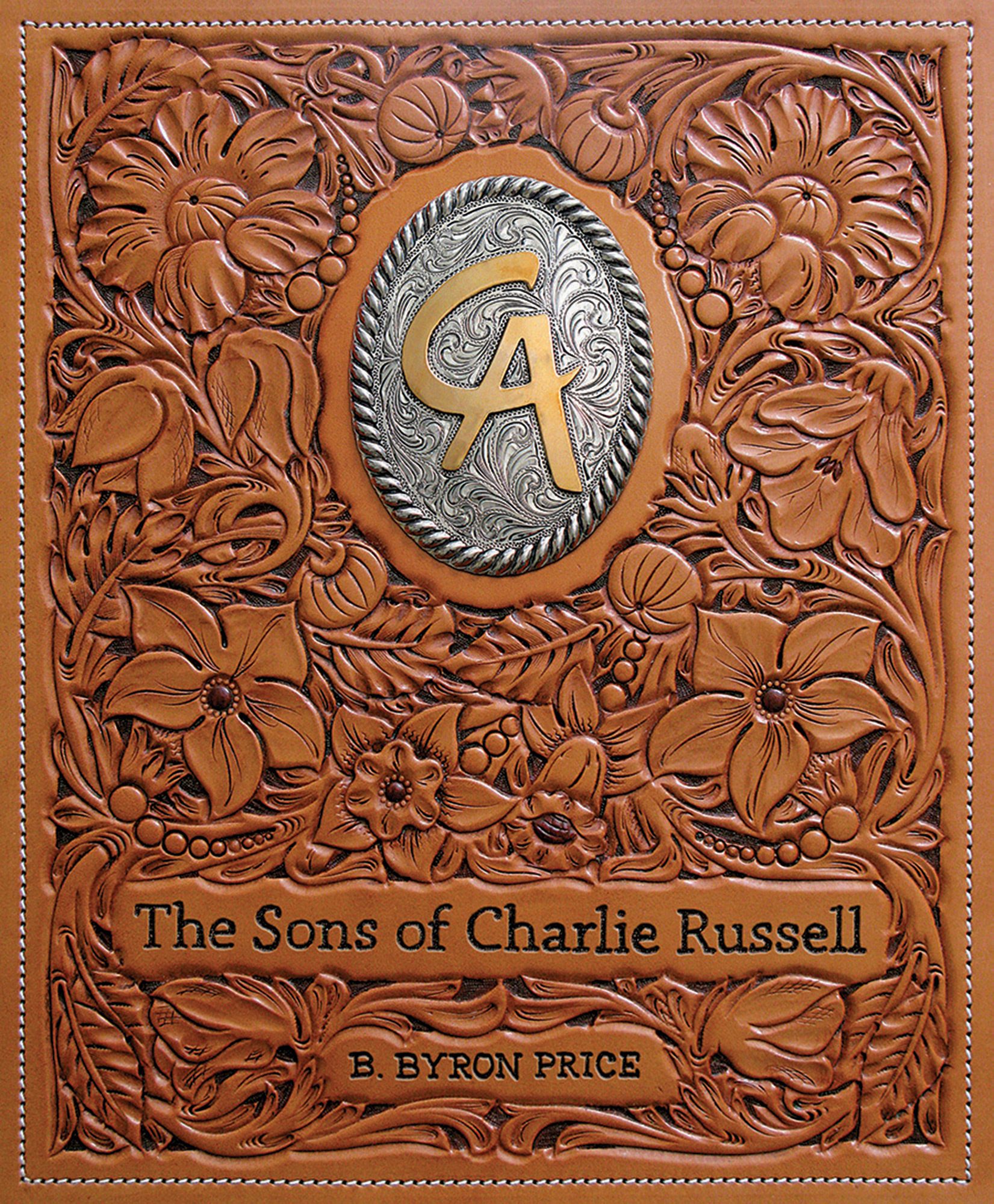

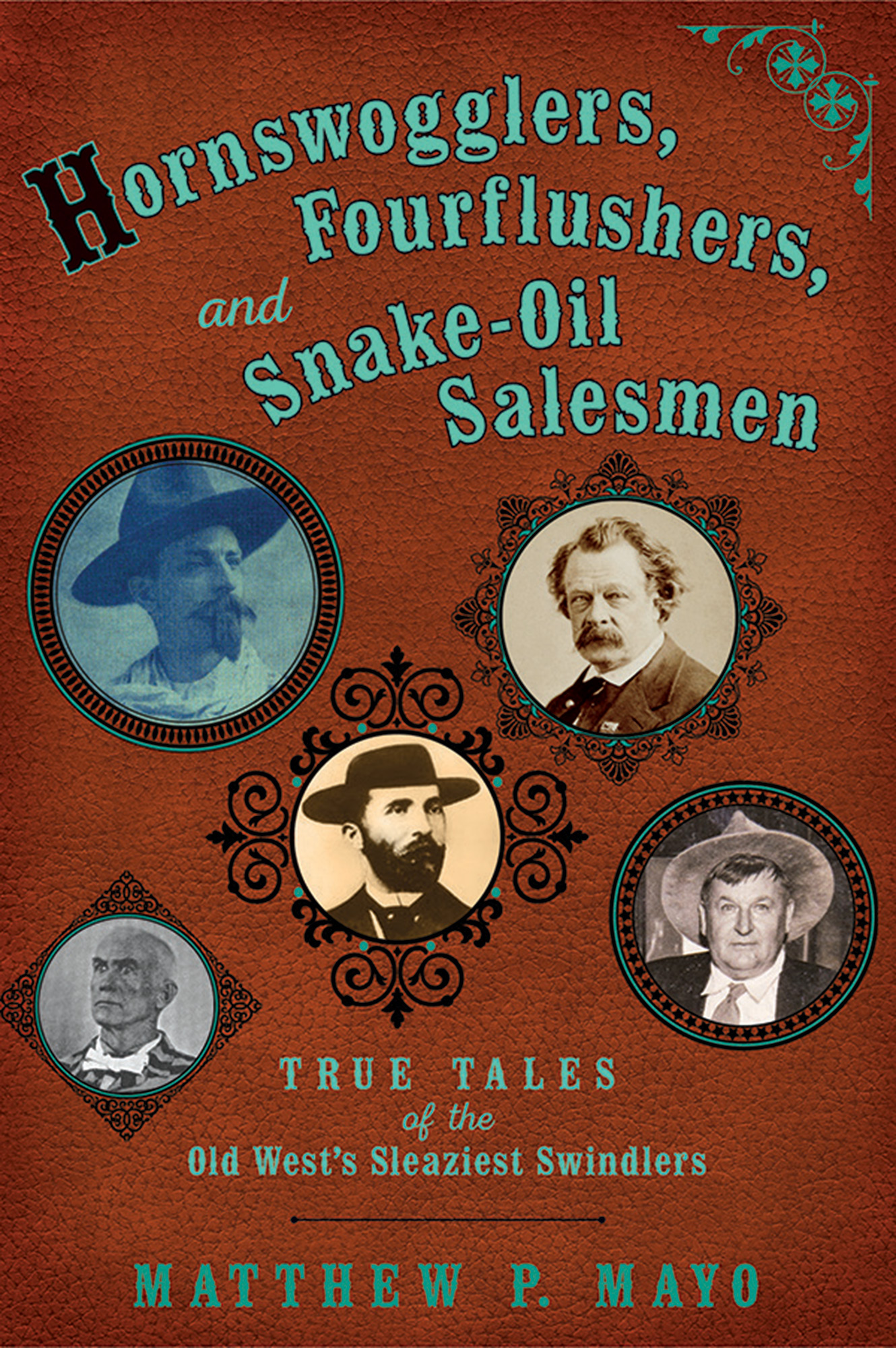
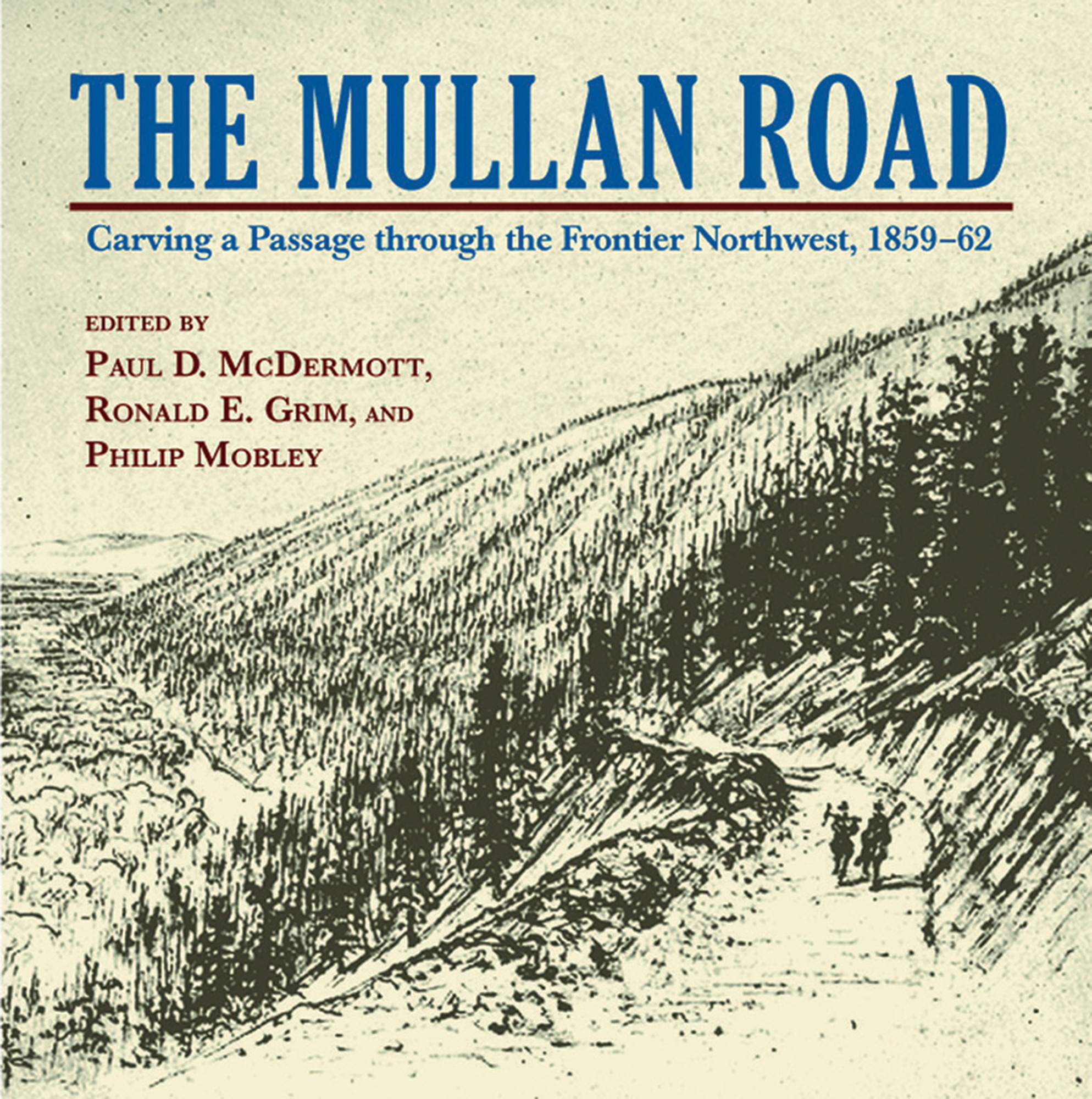
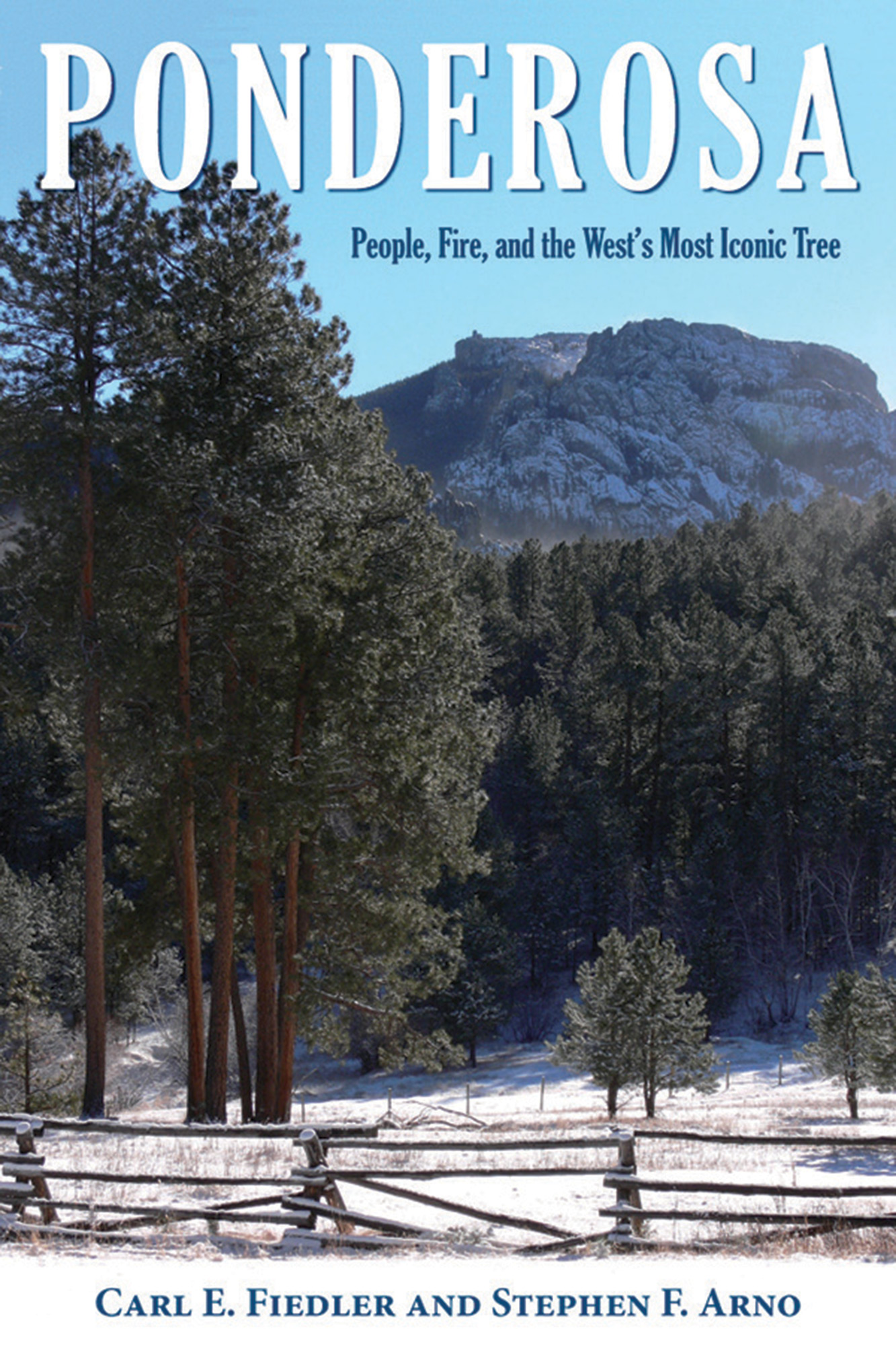
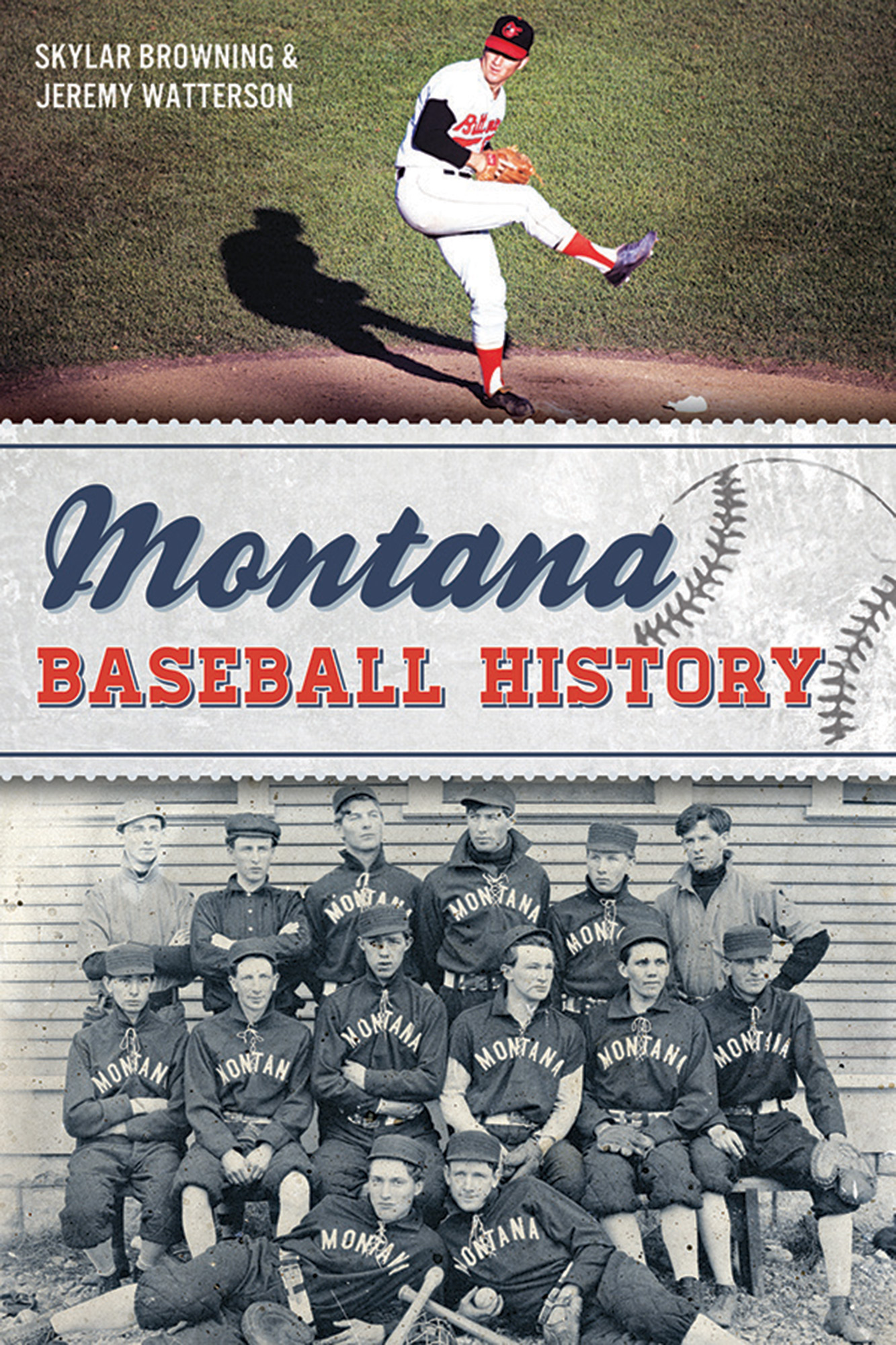


No Comments